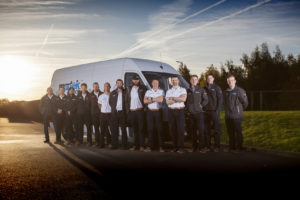
Marek Marine announced the launch last week of a new aviation division dedicated to drone operations. The company, self-billed as “a world leader in the manufacture and distribution of marine equipment,” promises to pioneer “unmanned maritime aviation services, after a successful track record of 25 years improving commercial maritime safety.”
Over the past six months, Martek has added more than 70 employees to the new division and plans to develop aerial, maritime solutions in the areas of intelligence, surveillance and reconnaissance, as well as in search and rescue, monitoring and detection of oceanic pollution, detection of drug trafficking and offshore infrastructure inspection.
“We’ve committed [more than $6 million] so far to establish a leading position in maritime [drone] capability. The establishment of a dedicated Martek Aviation division was a planned evolution of our business following recent major contract successes,” Martek CEO Paul Luen said.
“A number of major OEMs have approached us about operating partnerships to help grow their platform sales and we expect further announcements shortly. We welcome competition from the major companies entering this market and through continual investment in technology and people, we’re determined to retain our leading position as the market expands.”
Martek Aviation’s team has deployed drone operators with more than 43,000 flying hours with 9,500 hours in maritime alone. Division employees have logged time in more than 60 types of manned and unmanned aircraft.
Several companies are diving deep into maritime applications for drones. In Rotterdam, RanMarine Technology contracted with the city last year to task aquatic drones with trash duty – chowing down on 1,100 pounds of marine garbage.
Last month, Norwegian research conglomerate Sintef announced a drone project to optimize aquaculture in regional waters – especially for the beleaguered salmon population decimated by sea lice.
Underwater inspection drones operate autonomously across an area equivalent to a soccer field. Using a multi-variant sensor array, a drone can gather data concerning fish health and population density and transmit 3D visualizations back to home base.
Jason is a longstanding contributor to DroneLife with an avid interest in all things tech. He focuses on anti-drone technologies and the public safety sector; police, fire, and search and rescue.
Beginning his career as a journalist in 1996, Jason has since written and edited thousands of engaging news articles, blog posts, press releases and online content.
Email Jason
TWITTER:@JasonPReagan
Subscribe to DroneLife here.